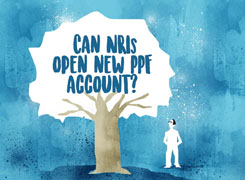Do I shift my monthly investment from VPF to NPS after 15 years?
Ramalingam Kalirajan |10879 Answers |Ask -Follow
Mutual Funds, Financial Planning Expert - Answered on Apr 01, 2025
He has an MBA in finance from the University of Madras and is a certified financial planner.
He is the director and chief financial planner at Holistic Investment, a Chennai-based firm that offers financial planning and wealth management advice.... more
I have invested in VPF since 2008 and it has grown to 64lacs currently. But have not invested in NPS at all. Should I divert my monthly investment to NPS and start from zero or should I continue to invest in VPF to take advantage of compounding? Please suggest.
Understanding VPF and NPS
VPF is an extension of EPF with tax benefits under EEE status, meaning contributions, interest, and withdrawals are completely tax-free. It provides fixed returns of around 8-8.5%, backed by the government. Withdrawals after 5 years are tax-free, making it a low-risk and stable option. However, it lacks equity exposure, limiting growth potential.
NPS, on the other hand, is a market-linked retirement scheme that offers a mix of equity and debt exposure. It has higher return potential (9-12%) but also comes with taxable withdrawals. Upon retirement, 40% of the corpus must be used for annuity, which is taxable. The extra Rs. 50,000 tax deduction under Section 80CCD(1B) is an added advantage, but NPS lacks liquidity as withdrawals are restricted until retirement.
Key Factors for Decision-Making
1. Compounding and Stability of VPF
VPF provides stable, tax-free compounding at 8%+ returns. Since you have been investing for 16 years, compounding is already working in your favor. The tax-free nature of both principal and interest makes it a highly efficient retirement tool.
2. Growth Potential and Risk in NPS
NPS has the potential to generate higher returns through equity exposure. However, it is also subject to market volatility. Additionally, the annuity requirement reduces flexibility, as a portion of the corpus is locked into a taxable pension.
3. Tax Efficiency and Withdrawal Flexibility
VPF is completely tax-free on withdrawal, while NPS has partially taxable withdrawals. If you start NPS now, the accumulated corpus will be small compared to VPF, reducing its impact on retirement planning. Since NPS funds remain locked until retirement, liquidity is limited.
Recommended Approach
Option 1: Continue VPF for Maximum Tax-Free Growth
If you want stability, predictable returns, and tax-free withdrawals, it is best to continue VPF. Your Rs. 64 lakhs corpus will keep compounding at 8%+, ensuring a risk-free retirement fund. Shifting to NPS would introduce market risk and annuity restrictions, which may not be necessary at this stage.
Option 2: Small Diversification to NPS for Tax Benefit
If you are looking for an additional tax benefit, you can invest Rs. 50,000 per year in NPS under Section 80CCD(1B). This will reduce taxable income while providing some exposure to equities. However, investing beyond this amount may limit liquidity and introduce unnecessary restrictions.
Final Insights
VPF is more efficient for retirement savings due to its tax-free nature, stable returns, and liquidity. NPS is suitable only for tax benefits, but the mandatory annuity requirement reduces flexibility. If needed, invest Rs. 50,000 yearly in NPS to optimize tax savings, but avoid diverting major funds from VPF to NPS. Continuing with VPF ensures compounding, stability, and tax-free growth, making it the better choice for retirement planning.
Best Regards,
K. Ramalingam, MBA, CFP,
Chief Financial Planner,
www.holisticinvestment.in
https://www.youtube.com/@HolisticInvestment
You may like to see similar questions and answers below
Mihir Tanna |1090 Answers |Ask -Follow
Tax Expert - Answered on Feb 16, 2023
Ramalingam Kalirajan |10879 Answers |Ask -Follow
Mutual Funds, Financial Planning Expert - Answered on May 02, 2024
Ramalingam Kalirajan |10879 Answers |Ask -Follow
Mutual Funds, Financial Planning Expert - Answered on May 20, 2024
Milind Vadjikar | Answer |Ask -Follow
Insurance, Stocks, MF, PF Expert - Answered on Mar 31, 2025
Mayank Chandel |2572 Answers |Ask -Follow
IIT-JEE, NEET-UG, SAT, CLAT, CA, CS Exam Expert - Answered on Dec 11, 2025
Mayank Chandel |2572 Answers |Ask -Follow
IIT-JEE, NEET-UG, SAT, CLAT, CA, CS Exam Expert - Answered on Dec 11, 2025
Ramalingam Kalirajan |10879 Answers |Ask -Follow
Mutual Funds, Financial Planning Expert - Answered on Dec 11, 2025
Samraat Jadhav |2507 Answers |Ask -Follow
Stock Market Expert - Answered on Dec 11, 2025
Samraat Jadhav |2507 Answers |Ask -Follow
Stock Market Expert - Answered on Dec 11, 2025
Samraat Jadhav |2507 Answers |Ask -Follow
Stock Market Expert - Answered on Dec 11, 2025
Samraat Jadhav |2507 Answers |Ask -Follow
Stock Market Expert - Answered on Dec 11, 2025
Dr Nagarajan J S K |2577 Answers |Ask -Follow
NEET, Medical, Pharmacy Careers - Answered on Dec 10, 2025
Mayank Chandel |2572 Answers |Ask -Follow
IIT-JEE, NEET-UG, SAT, CLAT, CA, CS Exam Expert - Answered on Dec 10, 2025
Samraat Jadhav |2507 Answers |Ask -Follow
Stock Market Expert - Answered on Dec 10, 2025


























